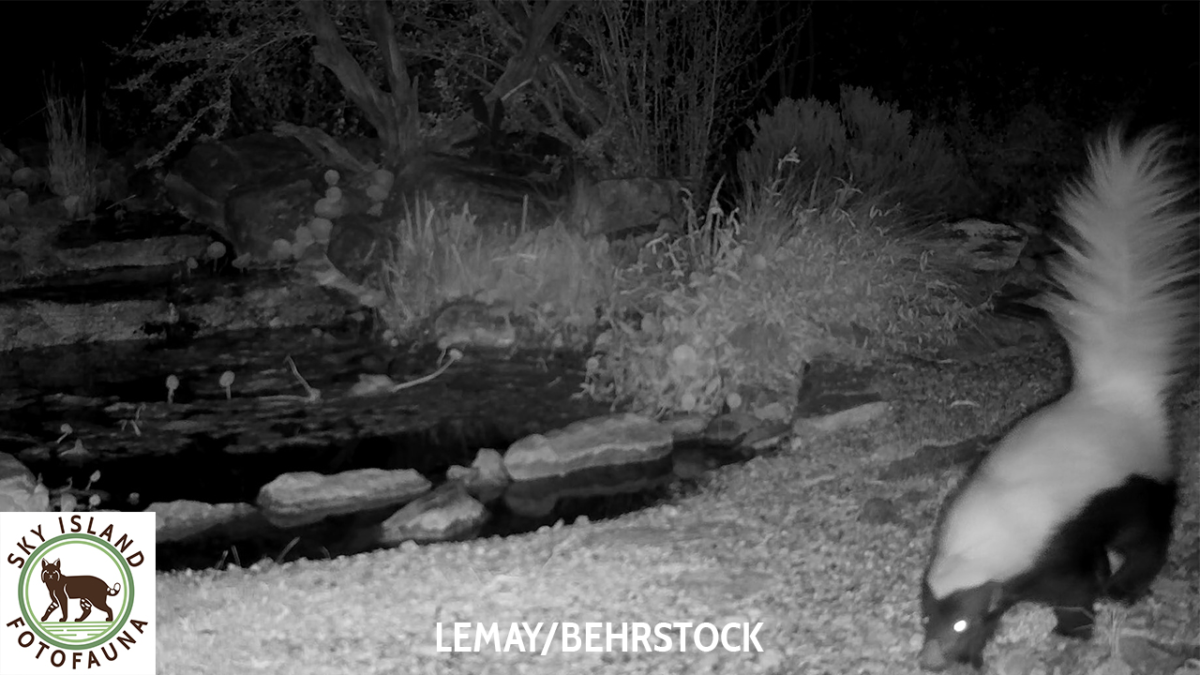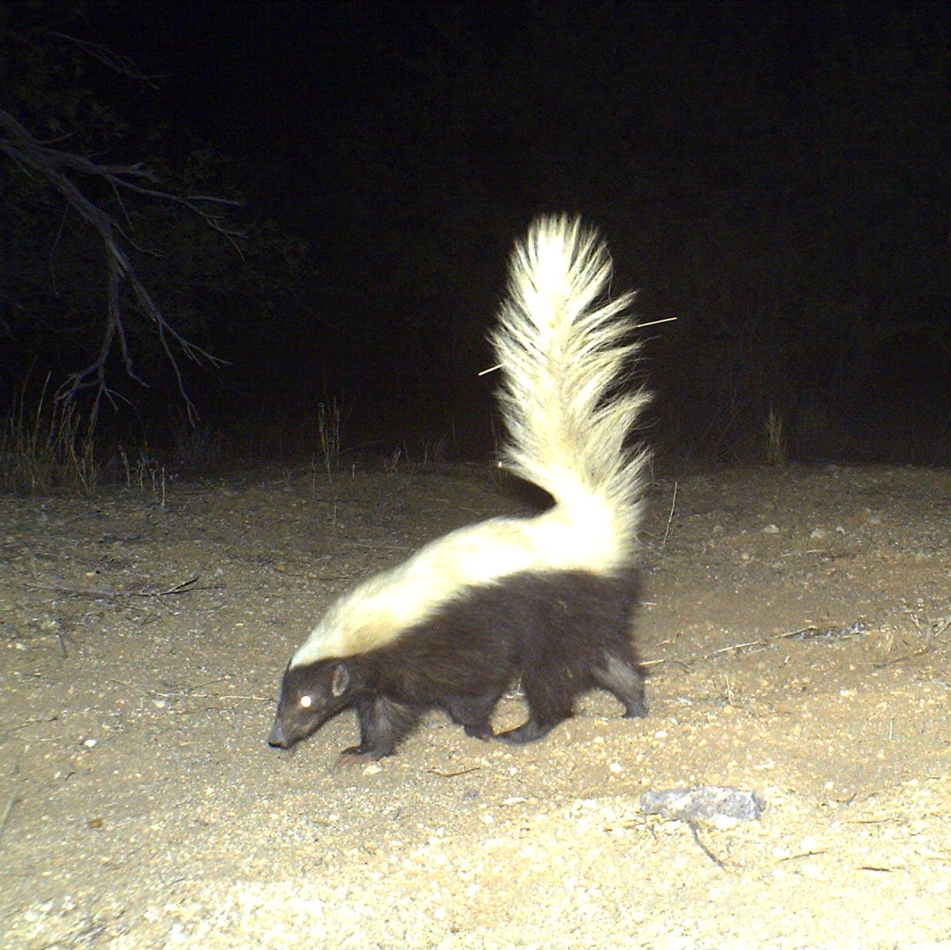Written by Aleidys López Romero
No, they don’t ‘oink, oink.’ But yes! they do have special powers and many endearing qualities. It’s the long, bare nose of American hog-nosed skunks (Conepatus leuconotus) that gives them their unique names. These fascinating and infamously stinky residents are just one of four kinds of skunks found in Arizona (the other three are spotted, striped, and hooded skunks).
Description
Hog-nosed skunks are one of the largest skunks in the world, ranging from 1.4 to 3 feet in length and weighing up to 9 lbs. They have a distinctive white stripe that runs from the base of their head to the end of their large, all-white tail. And they have large claws they often use to dig up insects and create sleeping burrows. Their large noses are helpful in scattering through leaf litter to find insect prey.
These nocturnal creatures have a strong sense of smell — and an equally strong smell that’s sprayed from their anal glands to deter predators. As if that weren’t impressive enough, American hog-nosed skunks aren’t afraid of snakes and are immune to their venom. As an extra layer of defense, the skunks’ bright fur coloration serves as a warning to predators of their undesirable smell. Luckily for Sky Island Alliance staff, this bold pattern also makes them more easily distinguishable when detected on one of our remote cameras.
Diet
American hog-nosed skunks are omnivorous creatures and tend to be solitary, opportunistic hunters, with an interest mostly in insects. But if other food isn’t available they’ll also branch out and eat small reptiles, carrion, berries and other vegetation like prickly pear cactus. Although they don’t hibernate, a decrease in food in the winter does cause them to lower their energy expenditure and lose some of the extra weight gained during the abundant summer months.
Habitat
The American hog-nosed skunk is a flexible creature that can thrive in a wide range of habitats. They can live in open desert-scrub, mountains, grasslands, and even tropical land areas. Their flexibility allows them to be found as far south as Nicaragua and as far north as the southern U.S.
Threats
Conservation Status: Least Concern
Major threats to American hog-nosed skunk populations include habitat loss and fragmentation, higher incidences of roadkill due to urban encroachment, and pesticide use. Their main predator is the great horned owl, which has little sense of smell and isn’t deterred by the skunk’s main defense.
Fun Fact
American hog-nosed skunks’ habit of digging not only gives them shelter and food, but it also helps aerate the soil — a win-win for all.
One Thing You Can Do
Join our FotoFauna network. We’ll walk you through the steps of setting up a wildlife camera, and then you can help us find and learn even more about these fascinating creatures.

Sources

